What struck me during my recent visit to the Philippines, was this phrase pegged unto the walls of a shrine I came to see:

“The Filipino is worth dying for”
Famous words uttered by Benigno Ninoy Aquino, one of the Philippines foremost leaders in recent history, who’s influence and death later on, gave rise to a formidable revolution that swept through the country into peaceful democracy after years of dictatorship. The People Power Revolution of 1986 was not motivated by violence nor bloodshed, but by peaceful demonstration of sheer might and will, one that was brought about by religious fervour and faith.
It was this faith that I had the chance to witness and experience together with 81 fellow pilgrims led by Reverend Fr Michael Chua and Reverend Fr Simon Yong, during our recent pilgrimage to Manila from the 5th to the 10th of February 2017. After nearly 4 hours onboard the 8.20am morning flight, our half asleep but excited pilgrims arrived in Manila, the capital city of this 103 million populous nation. Our pilgrimage trip took us through various major cities across the Metro Manila region besides Manila city, and we had a fascinating glimpse into the churches and enduring faith of this region’s economic, political and cultural hub.
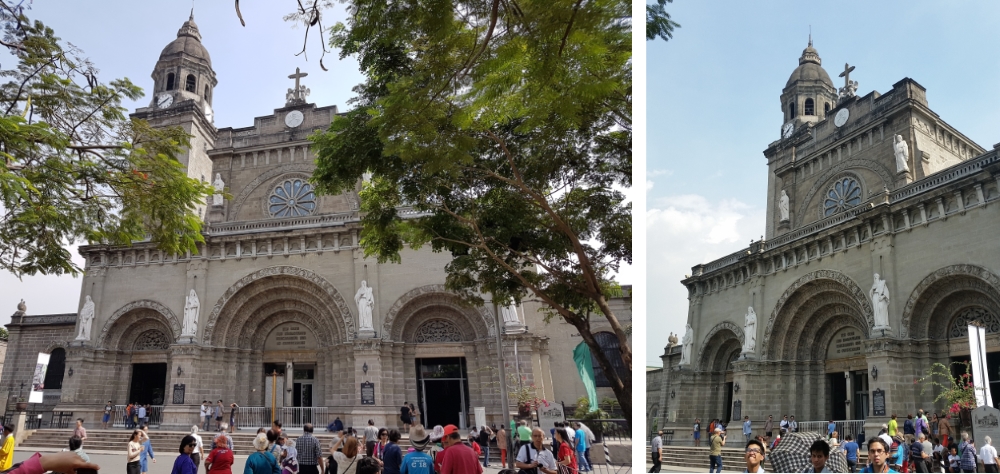
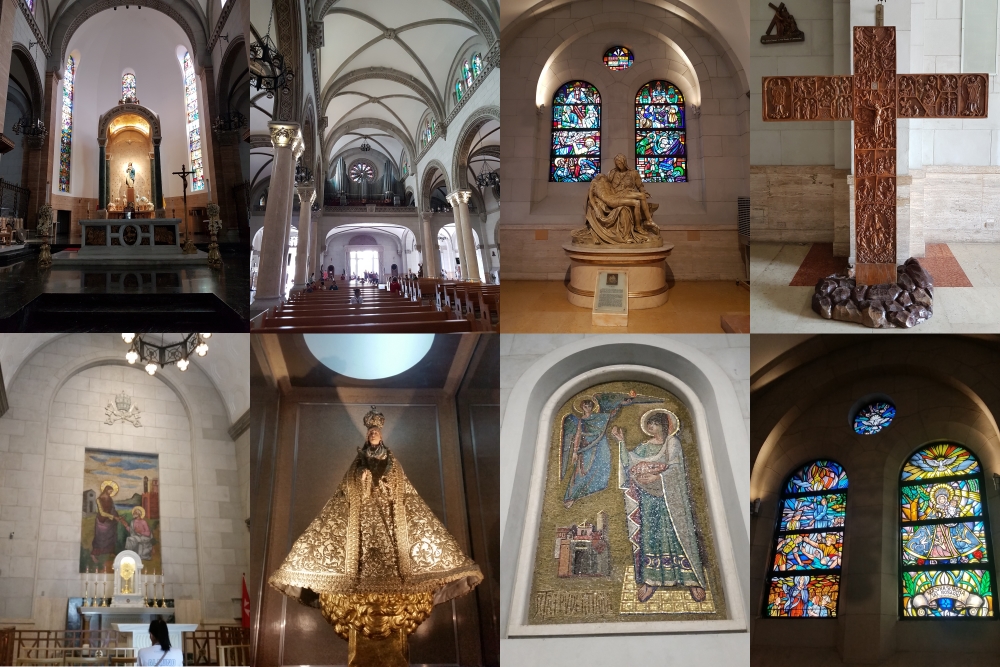
We were blessed and fortunate to visit large and majestic churches that this nation has in abundance. One of the largest is the Manila Cathedral within the old city walls of Intramuros in Manila city. First built in 1571, and rebuilt more than 5 times after countless number of earthquakes, typhoons and even through the Second World War, it continues to stand as a testament for the Filipino people and triumph of faith over difficult moments in history, with its present design last completed in 1958.
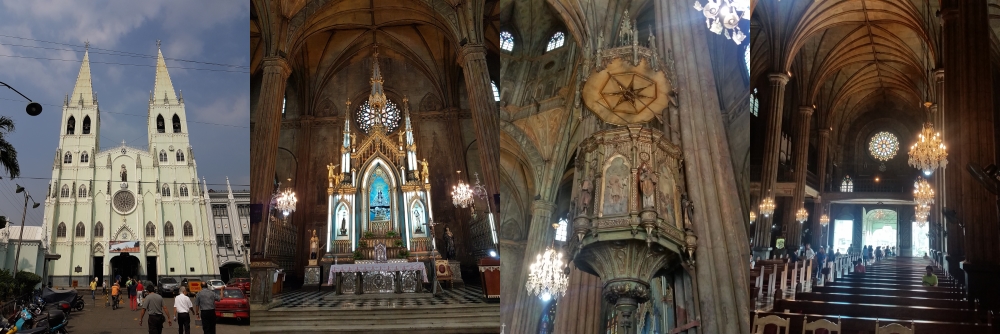
Another exquisitely beautiful example was the visit to the revival Gothic styled San Sebastian church, the only church in the Phillippines built almost entirely out of steel in 1891, at Quiapo city. We had the privilege of hearing Mass here one morning as we sang with our voices reverberating through the aged iron walls and gorgeous stained glass windows. Beautifully illuminated by lateral windows, the view within is truly a sight to behold with vaulted ceilings and steeples soaring into the heavens. The church is dedicated to the martyr Saint Sebastian, and houses a statue of Our Lady of Mount Carmel brought to the Philippines in 1617.
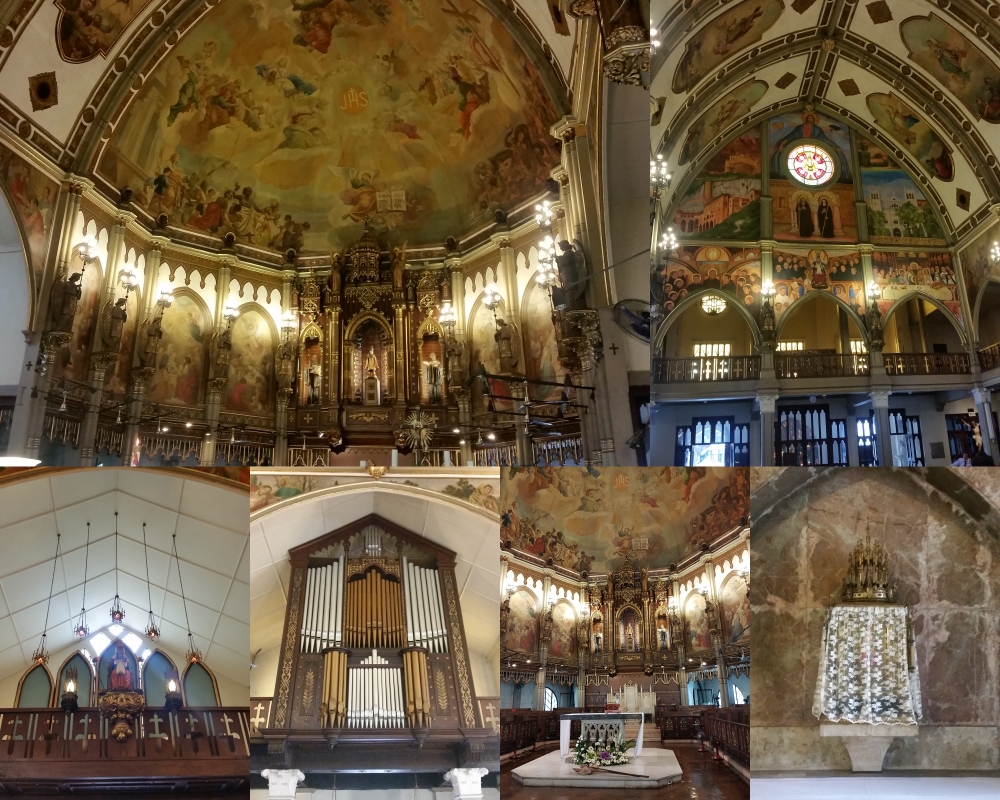
But nothing could beat the splendour that met our eyes when we visited the San Beda Abbey Church in Mendiola. Its architecture resembles that of the famous Benedictine monastery church in Monserrat, Barcelona, Spain. The sanctuary was bright and airy, with bulbs of heavenly light supported by painted angelic sculptures all across every pillar and ceiling. Its titular patron is Santo Nino de Praga (Infant Jesus of Prague) with special devotion to Our Lady of Monserrat from Spain, where the founders first founded the monastery in 1895 here in the Phillippines.
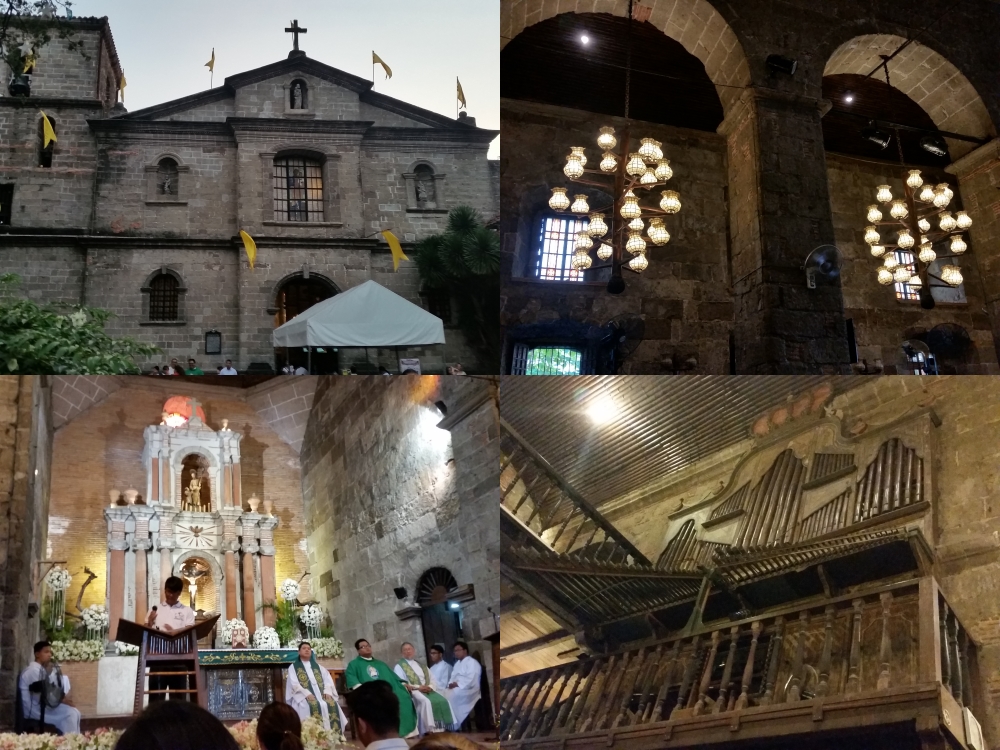
Amidst all the other awe inspiring churches, we walked into uniquely quaint ones as well, like the Bamboo Organ Church in Las Piñas city. Yet another historical landmark in this part of the city, it was erected back in 1824 with its organ built almost entirely out of bamboo and remains to this day the pride and joy of local Filipinos, as the only one of its kind in the world. In fact, even parts of the church ceiling and all the chandeliers are made completely out of bamboo too! We had the privilege of celebrating our first mass here, celebrated in both English and Tagalog and serenaded by the bamboo organ, with the ever enthusiastic parish priest Fr Kevin, speaking from the day’s readings, calling for us to be the salt and light of the world.
Throughout our 6 day pilgrimage, Father Simon gave us a 3 day recollection to deepen our understanding from our experiences and observations in a Filipino context. He broadened our views by reflecting on the fact that the Christian faith is not exclusive to Europeans or Westerners in particular even if it did come from them historically in the first place. Asians should be more open to Christianity, but Asian mindsets and convictions are still lacking today due to prejudices and bias.
He also points out that with the concept of excarnation, the modern world tries to demystify certain values and long held truths with its own reasoning and justifications, sometimes over-stretching and abusing the values of self-empowerment to total self-reliance without the need for divine truths. Here we are reminded to strike a balance with this paradox of faith and instead, learn to cherish our time honoured traditions and practices so that we can further understand and enrich our Catholic faith better.
Subsequently on the third day’s recollection, Father Simon realigned us back to the whole purpose of our pilgrimage, where the pilgrim journeys in search of the incarnated word when God came down to earth by way of condescension. Thus the pilgrimage is an ever-ongoing encounter with the divine through sacramentals. We are reminded to be continuously humble and penitent along the way of any pilgrimage, in order for a pilgrimage to bear fruit with true renewal and conversion of the soul, leading one closer to the eternal city of God, with the Holy Eucharist as its summit.
These recollections have made me realise and have greater appreciation for many things that have intrigued me throughout the pilgrimage. I was greatly moved by what I saw when I was at the Minor Basilica of the Black Nazarene, known among locals as the ‘Quiapo church’ (pronounced ‘kee-ah-poh’) which took its name from the district in which this beautiful church stands. Famous for its intense devotional processions of the Black Nazarene due to its miracles that its devotees have experienced, the miraculous black statue of Jesus carrying His cross, is taken out in procession, a few times a year namely during Good Friday services and during the ‘Traslacion’ procession every January 9th, where more than a million Filipinos descend upon the streets of Quiapo to witness and participate in this annual procession.
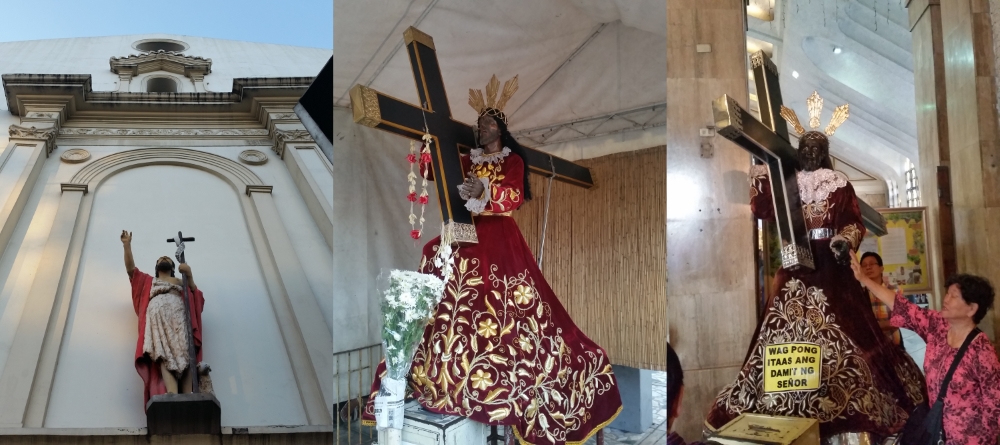
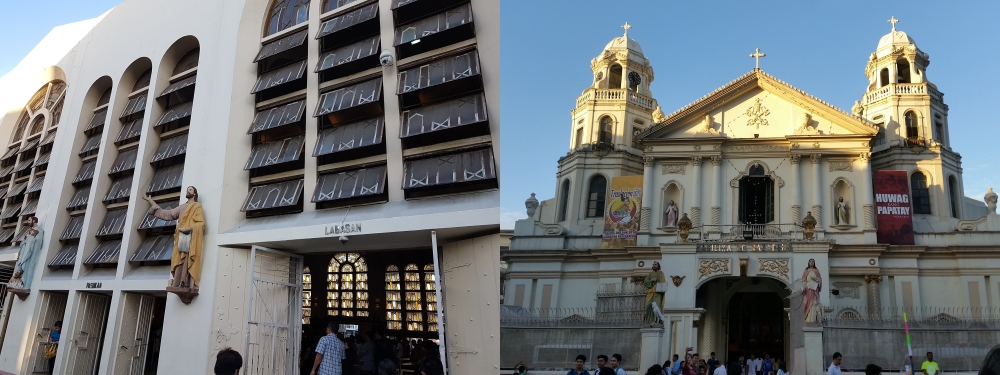
The stark blackness of the Black Nazarene’s image (similarly with the statue of Our Lady of Monserrat from Spain) was surprising at first, as it was not like the usual pale skin painted images we usually see in Catholic imagery. Apparently some attribute their appearances to the soot that came from burning candles of pious faithful. Others opined that it was a belief in alleviating to higher esteem, those that were deemed to be inferior or lowly, especially those that have dark complexion or skin colour; symbolising a sense of triumph for the persecuted and a vindication for the oppressed, so to speak.
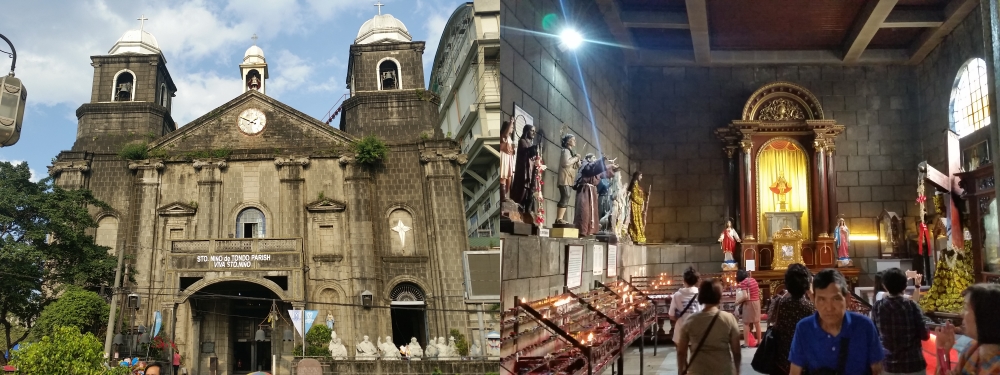
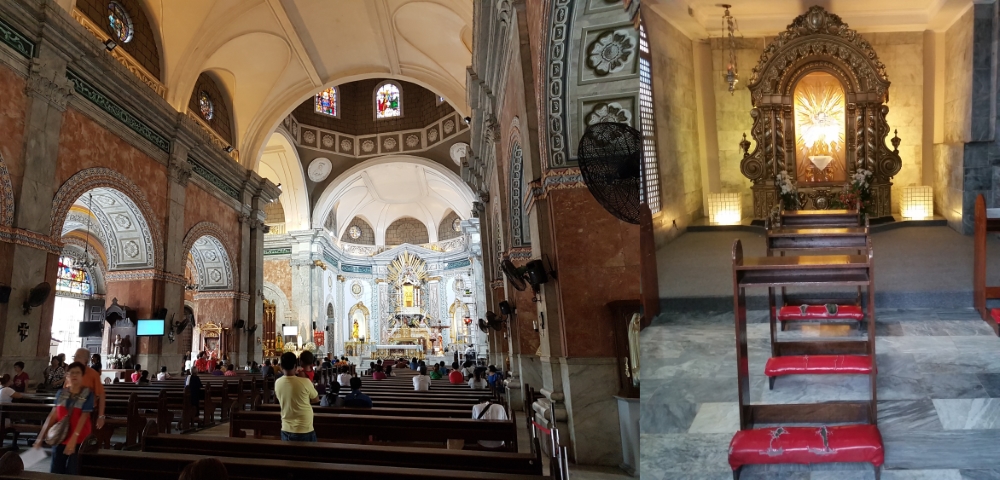
As we journeyed further across Metro Manila, we’ve noticed a high level of poverty at certain sectors of the city, especially in the outskirts were many were seen still living in the slums. However amidst poor areas in districts like the Tondo which we visited, churches have still remained a beacon of hope and refuge, with devotions still greatly attended. Tondo is famous for devotions to the Infant Jesus where locally it is affectionately known as “Santo Niño”, and our pilgrimage group had the chance to stop by at Santo Niño De Tondo parish church (Tondo Church) for a moment of adoration of the Blessed Sacrament. The Tondo church built in neoclassical style and established by Spanish friars in 1572, has enshrined the statue of Santo Niño that came all the way from Acapulco, Mexico till this day.
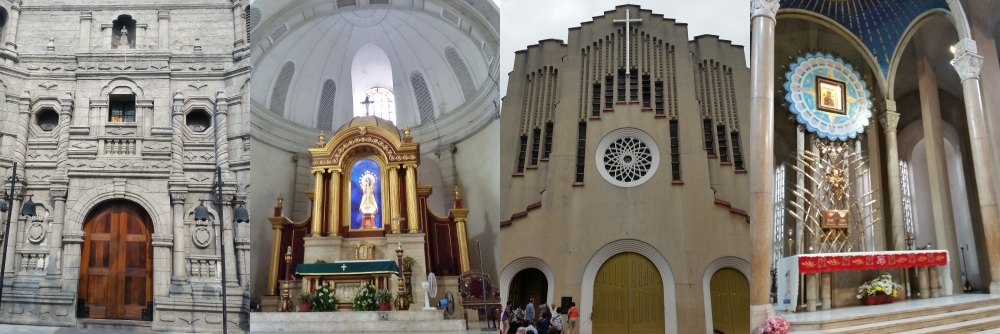

Another devotion that was very strong and evident among the Filipinos, are a plethora of localised images of the Blessed Virgin Mary due to their long historic association with Catholicism and Spanish colonisation in this country. It also reflects a very powerful connection and deep devotion to our Lady in their life. Among the churches which were dedicated to the Blessed Virgin Mary that we visited, was the Malate Catholic Church built in 1588 that enshrines the statue of Our Lady of Remedios (Our Lady of Remedies), the National Shrine of Our Mother of Perpetual Help in Paranaque city, otherwise known as Baclaran Church built in 1958, and the National Shrine of Our Lady of Peace and Good Voyage built in 1632, that enshrines the famous statue of Our Lady of Antipolo, which got its name from the city where the cathedral is situated.


One fascinating monument which stood out among all others; is this most unlikely location for a church to be built right in the middle of a roundabout in Quezon city surrounded by heavy traffic jams and passing vehicles. Famously known as the EDSA Shrine or the Shrine of Mary, Queen of Peace, Our Lady of EDSA; this church was built in 1989 and was named after the avenue’s intersection “Epifanio de los Santos Avenue” (EDSA). Apparently Filipinos decided to build a church on this very same spot which saw huge demonstrations from the People’s Power Revolution of 1986 and the EDSA revolution of 2001; to commemorate these momentous occasions in Filipino history that brought the Philippines out of political turmoil. It was also here, that I spotted those very famous words from the Filipino revolution leader Benigno Ninoy Aquino, etched unto the church’s walls.
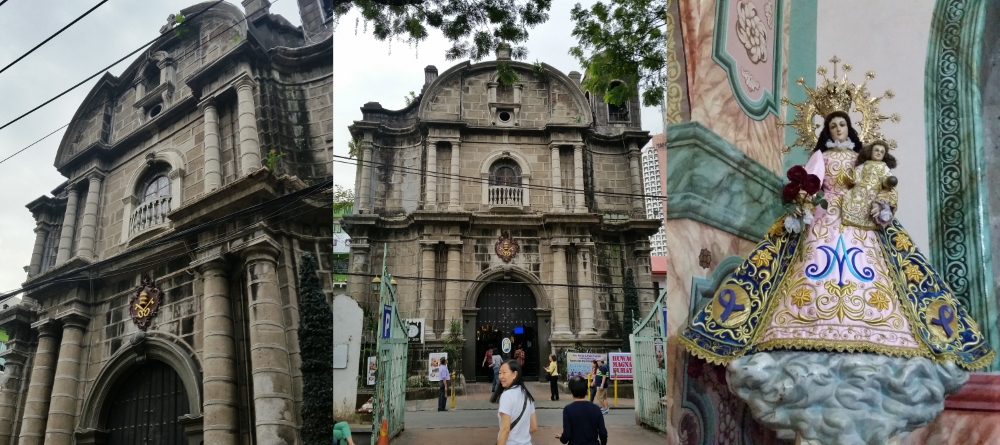
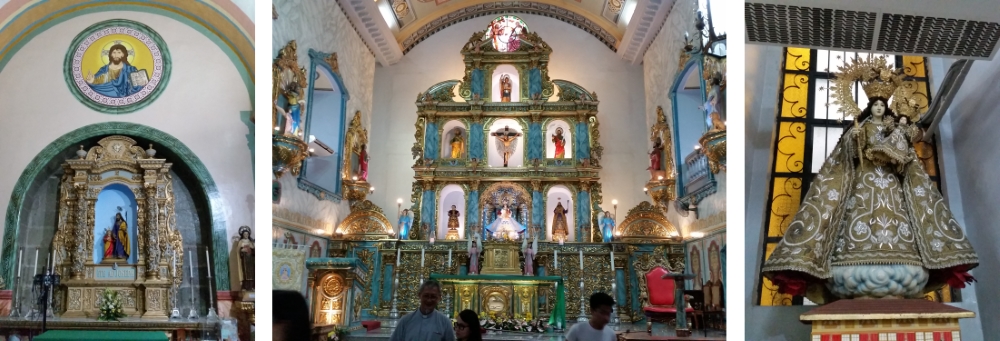
On the last day of our pilgrimage, Father Michael and Father Simon celebrated our final mass at the Saints Peter and Paul Parish Church (San Pedro Macati Church) in Makati city, not far from our hotel, before we flew back to Malaysia that same afternoon. A newly renovated parish in baroque style, this refurbished church which has stood here for centuries since 1620, enshrines yet another very old but famous statue of our Lady known as the Virgin of the Rose or “Virgen de la Rosa”, that has the relic of the Blessed Virgin Mary’s actual hair on the statue. Manila is never really short of anything but spectacular monuments of faith, which stands as a testimony to a people of God.
Before we knew it, the six days of whirlwind experiences across several cities in Filipino central were over! We truly have come full circle to better appreciate the Philippines in ways that make them special. Together with a fascinating Asian Hispanic twist to the story of faith that has woven into the lives of the world’s 4th largest Christian nation; making this country the bastion of Christianity in Asia today.
